
George T. Patton
June 15, 1922 — August 2, 2025
South Bend, IN
George Thomas Patton (1922-2025)
“Faith, family, health, and no debt.” These few words summarize the life of George Thomas Patton who died at the age of 103 in South Bend, Indiana, on Aug. 2, 2025. He was born in Riverhead, New York, on June 15, 1922, the only son of Johanna (Cushing) and George Thomas Patton. He had four sisters who predeceased him: Katharine (“Jean”) LaCola of Riverhead in 2016; Margaret (“Margie”) Stevens of Southampton in 2008; Ann Skarka of Riverhead in 2018, and Madeline (“Peachie”) Halsey of Water Mill in 2024. He said of his sisters that they never uttered an unkind word.
George attended school in Riverhead. As a 13-year-old in 1935, about 15 years after World War I ended, he memorized and recited the poem, “In Flanders Field” by Robert McCrae. In 1936, he attended camp in Jamaica, New York, earning $10 for the summer as a counselor. (George had a great memory for numbers, always recalling how much he earned at every job and the price of baseball tickets.) At Riverhead High School, he proposed the school’s sports teams be called the Blue Devils—after one of his favorite college teams—but the majority selected Blue Wave. He was president of his senior class, ran cross country and served as a sports stringer for various New York papers. In June 1940, he graduated from Riverhead High School.
He went to work as a messenger for a New York City law firm for 39 cents per hour. On October 5, 1941, he attended a World Series game between his beloved Dodgers and the Yankees at Ebbets Field. He received a ticket from the wife of Yankee player King Kong Keller and sat with other Yankee wives. The Dodgers were leading 4-2 going into the top of the ninth. With two out, two strikes and no runners on base, Dodger catcher Mickey Owen dropped a swinging third strike that would have ended the game, resulting in a Yankees runner that would later lead to four runs and a 7-4 win for the Yankees over the Dodgers. He remained a lifelong Dodger fan even after the team moved to Los Angeles, following games on a crackling radio or later on television.
As for most Americans, December 7, 1941, when the Japanese attacked Pearl Harbor, was a day that will live in infamy for George. The next day, he volunteered for military service in New York City. His Military Serial Number was 12037781 (first number, “1” represents volunteer, second number represents district, New York). He was part of the 8th Air Force, 56th Fighter Group, 62nd Fighter Squadron stationed in the south of England, attaining the rank of Staff Sargent, Four Strips. On the night before D-Day in June 1944, he prepared the planes for the invasion. In October 1945, he left Hallsworth, 20 miles north of London, to return to the United States.
Once home, he joined the 52/20 Club—a federal program for returning veterans that paid $20 per week for 52 weeks. He was a tree climber and trimmer in Riverhead. On St. Patrick’s Day 1946, he started at Notre Dame University. The GI Bill paid $565 and tuition was $460. He worked for Sollit Construction that was building Morris Inn, earning $1.89 per hour. (Baseball games at Wrigley Field in Chicago cost $3.60 in 1946.) After getting his undergraduate degree in history, he enrolled in law school at Notre Dame. After graduating, he decided to remain in Indiana and passed the state’s bar examination.
He was fixed up on a blind date with Corinne “Corky” Nowinski, a recent graduate of Indiana University and dental hygienist. They married Nov. 28, 1957, and had seven children. Every year thereafter, the Pattons celebrated Thanksgiving at the Morris Inn, where they held their wedding reception.
While practicing law in South Bend, he volunteered in Democratic politics, particularly supporting John Brademas, who served in the U.S. House of Representatives from 1958 until 1980, rising to the rank of Majority Whip. George served as a Justice of the Peace during the 1960s and 1970s resolving disputes.
George won one of his early cases on appeal before the Indiana Supreme Court, Wedmore v. State of Indiana, 233 Ind. 545, 122 N.E.2d 1 (1954). While preparing the briefs, he took a bus to the Indiana Supreme Court library in Indianapolis to look at briefs in similar cases to use as templates. He remembered the oral argument, particularly questions from Judge Gilkinson, who wore a blue polka-dotted tie and went on to write the successful opinion on jurisdiction.
He continued reading U.S. history and frequently quizzed friends and family on trivia about presidents and vice presidents. He also enjoyed learning new words. One of his favorite words, snollygoster, was also a favorite of President Harry Truman. For decades,George met regularly with a group of lawyers and friends over lunch to talk about law, history, and politics.
George used to end telephone conversations by saying, “Gotta run.” He started running marathons at age 62 in 1984. He ran 20 marathons in Chicago and South Bend as well as half marathons in Indianapolis. Whenever asked what he wanted as a present for Christmas, birthday, or whatever, he would say, “Peace and quiet.” May God grant him eternal peace and quiet now that he’s finished the race.
Favorite Memories of the Children
Katherine Ann— (Children: Nicholas, Christopher and Elizabeth Torrance)
I have wonderful memories of my dad kissing the bricks as he ran around the 500 track for the annual Mini Marathon, running my first marathon with him in Chicago, and cheering his beloved ND Men’s Basketball team, next to the buzzer, as they broke UCLA’s 88 game winning streak.
Constance Ann (Varga) — (Children: Joseph, Mary Cate and Madeline Varga)
My father’s office in the Lafayette Building was a place of cherished memories for me, both as a child and as an adult. It smelled like a library, a comforting scent that came from the countless law books lining his shelves. The walls were a gallery of our lives: high school senior pictures, our first-grade spelling papers, and his marathon medals, proudly displayed alongside the artwork my siblings and I made over the years.
When we were kids, he’d take us to his office on weekends to give mom a break. We’d play secretary, using his phones to call his partners' extensions, pretending to hold meetings and conduct important business. I'm sure his partners knew we'd been there on Monday morning!
As an adult, visits to his office became a different kind of ritual. I'd go to seek his advice, catch up or join him and his legal friends for lunch. They had a strict schedule, alternating between favorite spots like Louver Door, Silvertown and Doc Pierces—never the same place twice in a row!
Another favorite memory is how we handled the hot summer months. Our house wasn't air-conditioned, so we'd all pile into my parents' bedroom—the only one with an AC unit—with our sleeping bags and "camp" out for the night, enjoying the cool air together.
Perhaps my fondest memory, though, is of my dad's hands. He had these distinct gestures: twiddling his fingers together or fluttering them under his chin as he spoke. He was also notorious for playfully flipping us off. He’d put his middle finger on his nose while talking, a funny gesture I still find myself using today.
George Thomas, Jr.— (Wife: Eileen M. Ambrose)
My three favorite memories of my father are: (1) as a small child being dried after a bath and being cooled as he waved the towel back and forth while singing a song; (2) in a father-son canoe race on a Saturday morning while in last place and being offered a tow, he quipped, “I don’t need to be in the office until Monday morning”; (3) sharing a career in the law, talking over legal issues, and having him review my appellate briefs and point out a missing comma on page 43 or the improper use of “between” for “among.”
Theresa Marie (Hamby)— (Husband: Dr. Tim Hamby; Children: Kiley, Cooper and Sidney Hamby)
Favorite memories: watching Notre Dame football games and swimming at the Elks club.
Margaret Mary (Sorukas)— (Husband: Vince Sorukas)
- April 22, 2017—dad walked me down the aisle
- Sec. 16, row 8, seats 12 and 13—UND Men’s Basketball
- 1988 World Series—when dad flipped his baseball hat inside out to rally the Dodgers to a victory
John Paul— (Wife: Lisa Donahue; Children: Jack, Dagny and Lucy Patton)
Three favorite memories: attending Notre Dame basketball games with dad, covering my ears from the buzzer; dad driving carpool to Stanley Clark and passing the bus on the railroad tracks; and dad running his last marathon in 1997, and me running my first.
Mary Clare— (Children: Fiona and Clyde Patton Fraser)
My favorite memories of my father taught me life’s most important lessons through quiet, powerful moments.
1. He edited every school paper I wrote, line by line, instilling in me a deep respect for precision and effort.
2. When I hit the only parked car in a parking lot and wrote a check for the damage, he tore it up, teaching me accountability, then grace.
3. Before I even had my license, he let me back the car out of the driveway for the school carpool he drove—trusting me before I’d earned it.
These weren’t just memories. They were lessons in responsibility, trust, and love. His influence lives on in everything I do.
Service Schedule
Past Services
Burial
SAINT JOHN THE EVANGELIST - Riverhead
Guestbook
Visits: 363
This site is protected by reCAPTCHA and the
Google Privacy Policy and Terms of Service apply.
Service map data © OpenStreetMap contributors



